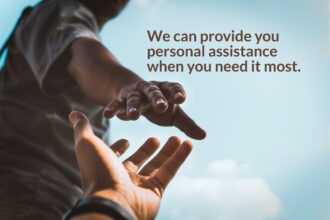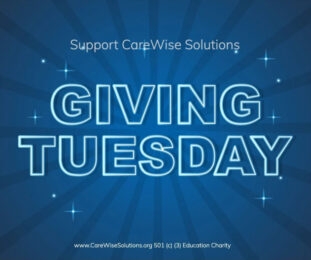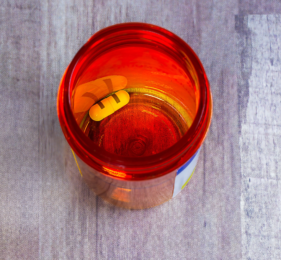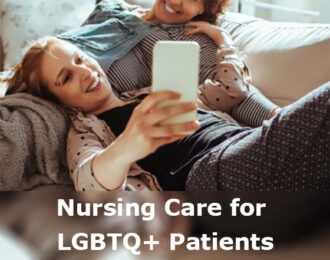How Acceptance Can Reduce Substance Use, Suicide Risk for LGBTQ Youth

By Healthline Updated February 2022 Alys Tomlinson/Getty Images
Due to the unique challenges they face, LGBTQ+ young people are at a higher risk of substance use and adverse mental health outcomes such as suicide.
New research from The Trevor Project examined the realities of substance use and suicide risk among LGBTQ young people in the United States.
The new research took a more comprehensive look than previous studies, examining how substance use broke down among a large and diverse array of demographic lines.
Experts say this new research is a positive step toward better understanding the interplay between substance use and the mental health of LGBTQ youth, leading to improved support and care.
In the past, research has shown an elevated risk of both substance use disorders and related adverse mental health issues, like attempted suicide, among LGBTQ youth.
One flaw in some of this research is that it often focuses on lesbian, gay, and bisexual (LGB) youth, not considering gender identity or capturing the full scope of how intersectional identities within a broad community as diverse as the greater LGBTQ+ population play a role in these issues.
The Trevor Project has released a new research brief that attempts to address some of these concerns. Using data from the 2021 National Survey on LGBTQ Youth Mental Health, they’re able to take a more comprehensive look at the realities of substance use and suicide risk among LGBTQ youth in the United States.
Jonah DeChants, PhD, research scientist at The Trevor Project, told Healthline this work answers a great need in better understanding the interplay between substance use and mental health in the nation’s LGBTQ youth, and offers pathways for better interventions.
“When we examine data among LGBTQ young people — whether we’re looking at substance use, mental health challenges, or any other experiences — we need to center the reality that this is an incredibly diverse group of youth,” said DeChants, who led the report for The Trevor Project’s research team.
“Looking at gender diversity, we know that trans and nonbinary youth experience disparate rates of suicide risk and other mental health challenges compared to their cisgender LGBQ peers,” he said. DeChants underscored the need for reports like this to shed a light on negative mental health outcomes for LGBTQ+ youth in the United States.
“This study found that regular prescription drug misuse among LGBTQ youth was associated with nearly three times greater odds of attempting suicide in the last year. While we weren’t necessarily surprised by this association, the magnitude of it is staggering,” he said.
DeChants added that understanding “within-group disparities like these is critical for addressing and preventing the negative health outcomes we often observe among LGBTQ youth.”
“Our sample is unique in that it is both large and diverse enough for us to apply an intersectional lens and examine differences in mental health risk among various subgroups — e.g., transgender youth, Black youth, bisexual youth, etc.,” DeChants explained.
What the data shows
The new brief uses data from the larger 2021 report that was based on online surveys of 34,759 LGBTQ youth in the United States who were recruited from targeted social media ads.
What substances did young people mainly turn to?
- The Trevor Project found that 56 percent of youth surveyed used alcohol in the past year — this included 47 percent of LGBTQ youth under the age of 21.
- More than 1 in 3 reported using marijuana in the past year, which also included 29 percent under 21. They found that 11 percent reported using a prescription drug that “was not prescribed to them in the last year,” with the rate being the same for those both under and over 21 years old.
- Additionally, 11 percent reported a daily or weekly use of both marijuana and alcohol, but this “regular” rate of alcohol or marijuana consumption was higher for young adults who were ages 21 or older than for their younger surveyed peers.
- Regular misuse of unprescribed prescription drugs was less common, at just 2 percent, and did not differ by age.
One interesting factor that separates this survey from others like it is how comprehensive it is in factoring out how substance use broke down among demographic lines.
White cisgender boys and young men had regular alcohol use rates at 20 percent, compared to 9 percent for other LGBTQ young people.
Native or indigenous LGBTQ youth had greater odds of regular reported marijuana use compared to white peers, while multiracial LGBTQ youth showed greater rates of reported regular prescription drug misuse compared to white peers.
Nonbinary youth who were assigned male at birth were the only group surveyed who reported higher rates of regular marijuana use than cisgender males.
The research also spotlighted how external pressures and factors affected substance use among LGBTQ youth.
Those who reported experiencing conversion therapy — a harmful practice that aims to “change” a youth’s LGBTQ identity to cisgender or straight identities — were shown to have higher odds of reporting regular alcohol and marijuana use, as well as prescription drug misuse.
Similarly, those who experienced physical harm because of one’s LGBTQ identity had higher rates of alcohol and marijuana use and were almost two times more likely to misuse prescription drugs.
The survey also revealed that regular prescription drug misuse was tied to a nearly three times higher chance of attempting suicide in the past year. This was for youth both older and younger than age 21.
For those under 21 years old, regular alcohol use was tied to nearly 50 percent greater odds of attempting suicide in the last year. The odds were high for those ages 21 and older, but not as high as for younger LGBTQ individuals.
In all age groups, regular marijuana use was linked to higher odds of attempting suicide in the last year.
Past reports have certainly shown elevated substance use risk and adverse mental health outcomes for LGBTQ+ people at large.
It’s especially important to highlight this reality in young people, given teens and young adults often find themselves in vulnerable situations — caught between a culture that stigmatizes mental health concerns and substance use disorders on their own and then compounded by the co-occurring stressors of being young and LGBTQ in modern American society.
Heather Zayde, LCSW, a Brooklyn-based clinical social worker and psychotherapist, told Healthline that substance use disorders typically affect 9 to 10 percent of the general population, but those numbers rise to 20–30 percent for the LGBTQ community.
She said that young LGBTQ people face increased rates of discrimination, harassment, and bullying.
Young LGBTQ people who live in rural areas can face social stigma and other co-occurring mental health conditions that might come with fewer supports and interventions. This can create an environment where substance use issues could arise.
“A lot of LGBTQ teens deal with anxiety and depression. When dealing with societal issues, anxiety can be a factor, and to deal with all that anxiety, a lot of people self-soothe to get a handle on it,” Zayde said.
Recently, a survey out of Colorado detailed similar trends as the larger national survey from The Trevor Project. It looked at LGBTQ+ Coloradans and how pervasive early childhood trauma is linked to substance use disorders and other mental health challenges.
In that survey, which was funded by The Denver Foundation and conducted by Colorado social science research and evaluation consultancy OMNI Institute, adverse childhood experiences (ACEs) like abuse, neglect, or family dysfunction were tied to increased risks of substance use disorder and suicide attempts, along with depression and chronic disease.
When asked why research like this and The Trevor Project report are important, T Schweimler, OMNI Lead Researcher for the State of the State report, told Healthline that this work is necessary to identify “what those needed interventions and supports are.”
“It allows us to dig deeper — looking beyond what is impacting the LGBTQ+ community as a whole, to find what the needs and priorities are and how they differ among subsets of our community,” they said. “It lets us move beyond a ‘one-size-fits-all’ approach and into really tailoring the supports to individuals living at the intersection of multiple identities.”
“We can’t expect folks to show up fully — in our community, in relationships, in conversations, and certainly not in interventions and programming — if we fail to recognize all the various additional identities they hold and how these shape how they move through life,” Schweimler added.
“Key findings from the State of the State show that many LGBTQ+ Coloradans have unrecognized behavioral health concerns contributing to higher rates of suicide contemplation and attempts. This is an opportunity for community organizations like Envision: You to spread awareness and advocate for increased conversations about mental health that break down stigma and connect individuals to LGBTQ+ affirming behavioral health resources,” said Steven Haden, MSW, chief executive officer and co-founder of Envision:You.
Finding support
In The Trevor Project survey, LGBTQ-specific threats to a young person’s mental health and physical safety are cited.
When it comes to the statistics on conversion therapy and its effects on elevated rates of issues surrounding substance use, DeChants said that this “dangerous and discredited practice” is “extremely harmful to LGBTQ young people.”
“Previous research has shown that these types of efforts to change a youth’s LGBTQ identity to straight and/or cisgender can have severe and lasting impacts on their health and well-being. So, it’s not surprising that these young people may be more likely to use substances to cope,” he added.
Zayde said that being able to turn to a community for support can make a big difference for LGBTQ young people who face the additional challenges of societal and cultural stressors.
“What we need to be doing is teaching teenagers how to self-soothe in different and better ways. If someone does develop a substance use disorder, it needs to be treated in a different way. Tossing them in a different population is really not as effective as putting them in a group with other LGBTQ teens,” she said.
“A lot of people say, ‘the opposite of addiction is connection,’ and I think a lot of these teenagers feel incredibly disconnected from one another. A kid who doesn’t have a lot of LGBT friends in their lives. They don’t feel connected. When substance use issues arise, we want to create that connection among them,” Zayde added.
She explained that many young LGBTQ people might not have the benefit of an affirming adult or a guidance counselor at school, for instance, who might be either well-versed in LGBTQ-specific concerns or even accepting of that young person’s identity.
LGBTQ youth centers or community spaces can be a source of comfort for young people. This support can come in many forms such as substance use support groups, counseling, building networks that can offer needed resources for treatment, or simply friendship and community.
Twelve-step programs and substance use counseling geared specifically to LGBTQ youth also exist. A community center, even if it doesn’t have that program itself, might have resources to which they can direct a person.
While these kinds of gathering spaces and support systems are helpful, Zayde stressed that in a small town or a rural area, for example, pervading stigmas might make approaching these spaces a step too far for a young person.
For instance, if you’re too young to drive or don’t have access to transportation, it’s hard to ask the adult in your life to “drive me to the substance use support group,” she said.
Similarly, living in a small town could bring with it the threat of running into someone you know which can pose another stressor if a young person is closeted or seeking anonymity when accessing these resources.
The pandemic has oddly presented one positive: Zoom. “So many of these groups are happening on Zoom and you can do it from the comfort of your own home,” Zayde said.
Zayde added that while COVID-19 has been horrible, the availability and access of these groups is amazing. You can just hop on the phone or computer and “have an instant connection.
One area of concern that all the experts cited is prescription drug misuse among LGBTQ young people.
DeChants said that since The Trevor Project’s survey is “cross-sectional in design,” it can’t tell us exactly why this misuse is tied to increased odds of attempting suicide. He pointed to the reality that “substance use and suicide risk are a bit of a chicken-and-egg scenario with mental health research.”
It’s hard to exactly “distinguish between the symptoms of suicidality that led a person to start using substances, and the symptoms or suicidality that then result from substance misuse and its negative impacts on their life,” he added.
“Unfortunately, we don’t have the level of detail needed to determine the direction of that relationship. There are a number of possible factors that may contribute to the high rate of suicide risk associated with prescription drug misuse, as compared to alcohol and marijuana,” DeChants explained.
“These could include the devastating effects of opioid withdrawal on one’s mental health, the increased potency and addictive nature of prescription-strength substances, and the isolating and stressful effects of prescription drug misuse — to name a few,” he said.
Building a more supportive future for LGBTQ youth
All the experts interviewed discussed the fact that more needs to be done to offer better support for LGBTQ young people so that these statistics on substance use and suicide risk are less dire. For the researchers out of Colorado, it means pinpointing the root causes embedded in society that make these adverse outcomes a reality.
“Although much progress has been made, homophobia and transphobia are still very real and being experienced by many LGBTQ+ folks and I think this reality lies at the heart of this data. Regarding the higher rates of ACEs among trans and nonbinary participants, we can think about how much progress is still needed in creating open and affirming environments for children to explore gender,” Schweimler said.
They added that trans and nonbinary children and youth, as well as young people “exploring or playing with gender roles and gender expression,” often find themselves the “targets for discrimination and abuse, both at home and at school.”
“These kinds of trauma don’t simply go away at adulthood. We can find that for some folks, that trauma really becomes internalized and contributes to those higher rates of substance use and mental health diagnoses and higher rates of suicide that we see,” Schweimler said.
Haden added that the high prevalence of ACEs displayed in the Colorado survey shows that many LGBTQ people face “trauma, abuse, neglect, or family dysfunction early in their lives.”
“While these instances may not necessarily be related to their LGBTQ+ identity, we know that many in the community have experienced discrimination, harassment, as well as violence, and often lack of family acceptance as young people,” he said.
“The invalidation of one’s identity by family members and society causes chronic stress, which can lead to increased rates of behavioral health challenges for many LGBTQ+ people. Higher rates of ACE’s have been linked to increased substance use, suicidality, and chronic diseases like cancer, diabetes, and heart disease,” he continued.
Zayde pointed to the reality that multiple oppressions (such as racism, transphobia, bullying based on one’s gender identity or sexuality, among others) can have a “multiplicative effect” on an LGBTQ+ young person.
If someone is grappling with the harms of racism on top of their identity as a trans person, for instance, it can create an accelerating domino effect that can feel very hard to push back against.
Trying to build structural support in society at large — and in communities and within families and schools, at the micro-level — can make a big difference in seeing a world where those statistics on substance use and suicidality are less common for LGBTQ youth.
Looking ahead, DeChants said that the Trevor Project hopes to “examine ways to better support LGBTQ youth so they are less likely to engage in substance use or consider suicide in the first place.”
He pointed out that this latest research underscores why federal surveys examining substance use among youth in the United States must collect information on transgender and nonbinary identities to accurately capture the scope of the problem among all LGBTQ youth.
“Beyond data collection, these findings reinforce acceptance as a powerful protective factor against a multitude of negative health outcomes like substance misuse, negative mental health challenges, and suicide risk,” DeChants said. “Ultimately, when we provide supportive, affirming environments for LGBTQ youth, we increase their likelihood of leading healthy, happy lives,” he said.





